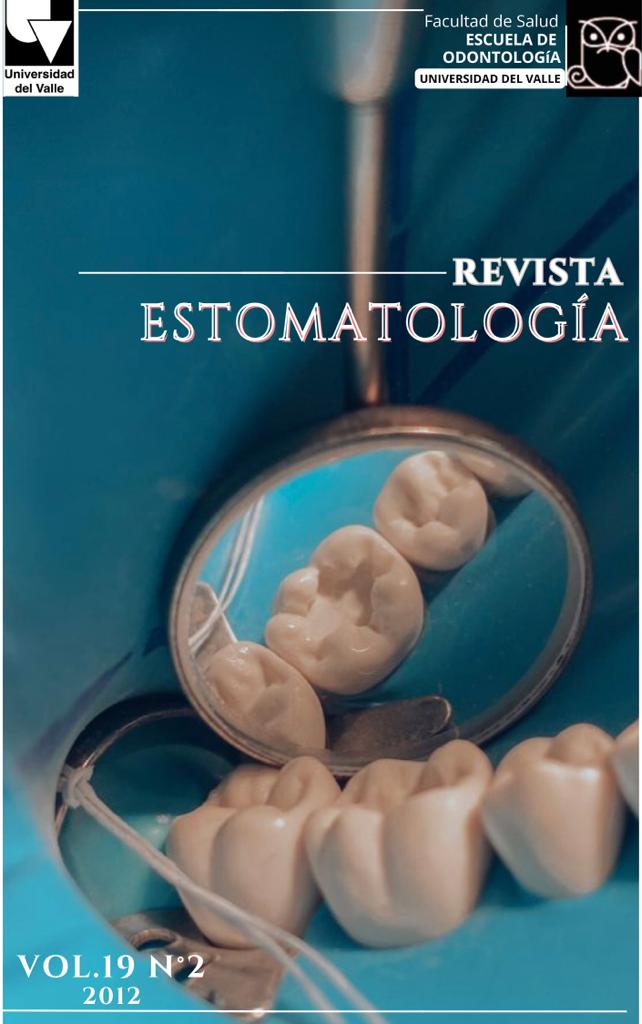Ossification characteristics of the hand and the cervical vertebrae and correlation between the two techniques as indicators of somatic maturation in children from 8 to 17 years
Main Article Content
Objective: To determine the characteristics of hand-wrist and cervical vertebral ossification and establish the correlation between these two techniques as indicators of somatic maturation in children between 8 and 17 years old.
Materials and Methods: A cross sectional and correlational study was carried out in 200 children between 8 and 17 years old, born in the same city. Children should show no systemic diseases that affect the skeletal development or craniofacial syndromes. Lateral cephalometric radiographs and carpogram test were taken in the same day. The frequency of the variables such as gender, carpal and cervical vertebrae maturation indexes was established. A correlation matrix (Pearson’s coefficient) for the quantitative variables (height and weight) and the variables that explain the indexes, and the ordinal scale variables and Kendall’s Tau-b statistics were done. Regression models were developed to predict the skeletal maturation index (SMI).
Results: According to the age and level of skeletal maturation (skeletal maturation assessment - SMA), the ossification stages begin earlier in women than in men (women SMI1: 8.4 +0.8 years and in men to 10.3 +1.5 years). Depending on the correlation model, there is a direct relation between height and shape of vertebrae with the SMI. The coefficient of determination (R2) indicated that 86% of SMI is explained by the two analyzed variables.
Conclusions: There was a statistically significant correlation between height and shape of the vertebral body with stages of skeletal maturation index (SMI).
- Skeletal maturation
- cervical vertebrae
- height
- weight
2. Fishman L. Chronological versus skeletal age, an evaluation of craniofacial growth. Angle Orthod 1979; 49:181-9.
3. Uribe GA. Fundamentos de Odontología. Ortodoncia, Teoría y Clínica. Cap 2 Corporación Para Investigaciones Biológicas: Medellín; 2004
4. Hernández M et al. Atlas de Maduración Ósea y Predicción de Talla. ED. Díaz de Santos; 1991.
5. Grave KC et al. Skeletal ossification and the adolescent growth spurt. Am J Orthod 1976; 69(6):611-9.
6. San Román P, Palma JC, Oteo MD, Nevado E. Skeletal maturation determined by cervical vértebrae development.Eur J Orthod 2002; 24(3):303-11.
7. Almada EC et al. Skeletal maturation analysis by morphological evaluation of the cervical vértebrae. J Clin Pediatr Dent 2006; 30:265-270.
8. Tulloch JFC, Proffit WR, Phillips. Influence on the outcome of early treatment for class II malocclusion. Am J Orthod Dentofac Orthop 1997; 111:533-42.
9. Growth Charts for the United States 2000 CDC: Methods and Development. Vital and Health Statistics. Department of health and human service. 2002; 11(46).
10. Garcia B. Antropometría por edad, género y estrato socieconómico de la población escolarizada de la zona urbana de Cali. Col Med 2003; 34:61-8.
13. Flores-Mir C, Burgess CA, Champney M, Jensen RJ, Pitcher MR, Major PW. Correlation of skeletal maturation stages determined by cervical vértebrae and hand-wrist evaluations.Angle Orthod 2006; 76(1):1-5.
Downloads
Los autores/as conservan los derechos de autor y ceden a la revista el derecho de la primera publicación, con el trabajo registrado con la licencia de atribución de Creative Commons, que permite a terceros utilizar lo publicado siempre que mencionen la autoría del trabajo y a la primera publicación en esta revista.





